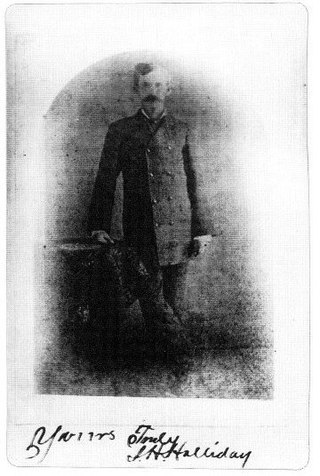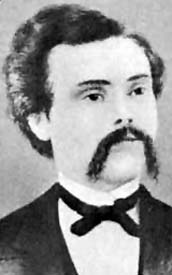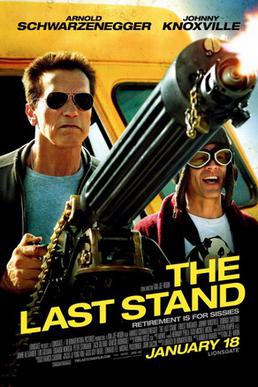Related Research Articles

The Saint Valentine's Day Massacre was the murder of seven members and associates of Chicago's North Side Gang on Saint Valentine's Day 1929. The men were gathered at a Lincoln Park, Chicago garage on the morning of February 14, 1929. They were lined up against a wall and shot by four unknown assailants, two of whom were disguised as police officers.

John HenryHolliday, better known as Doc Holliday, was a dentist and later a gambler, gunfighter, and a close friend and associate of lawman Wyatt Earp. Holliday is best known for his role in the events surrounding and his participation in the Gunfight at the O.K. Corral in Tombstone, Arizona. He developed a reputation as having killed more than a dozen men in various altercations, but modern researchers have concluded that, contrary to popular myth-making, Holliday killed only one to three men. Holliday's colorful life and character have been depicted in many books and portrayed by well-known actors in numerous movies and television series.

Giuseppe "Joe the Boss" Masseria was an early Italian-American Mafia boss in New York City. He was boss of what is now called the Genovese crime family, one of the New York City Mafia's Five Families, from 1922 to 1931. In 1930, he battled in the Castellammarese War to take over the criminal activities in New York City. The war ended with his murder on April 15, 1931, in a hit ordered by his own lieutenant, Charles "Lucky" Luciano, in an agreement with rival faction head Salvatore Maranzano.
Chicago, Illinois, has a long history of organized crime and was famously home to the American mafia figure Al Capone. This article contains a list of major events related to organized crime.

Charles Binaggio was an American gangster who became the boss of the Kansas City crime family and concocted a bold plan to control the police forces in Kansas City, Missouri and St. Louis, Missouri.
The Red Crown Tavern and Red Crown Tourist Court in Platte County, Missouri was the site of the July 20, 1933 gun battle between lawmen and outlaws Bonnie and Clyde and three members of their gang. The outlaws made their escape, and were tracked down and cornered four days later near Dexter, Iowa and engaged by another posse. The shootout was depicted in Arthur Penn's 1967 film Bonnie and Clyde, though the sign on the motel in the movie reads "Platte City, Iowa," not Missouri.

Edward James Adams was a notorious American criminal and spree killer in the Midwest. He murdered seven people–including three policemen—over a period of around 14 months, and wounded at least a dozen others. At age 34, Adams was surrounded and then killed by police in Wichita, Kansas.
Nicholas Civella was an American mobster who became a prominent leader of the Kansas City crime family.
John Lazia, also known as Brother John, was an American organized crime figure in Kansas City, Missouri, during Prohibition.
The Norco shootout was an armed confrontation between five heavily armed bank robbers and deputies of the Riverside County and San Bernardino County sheriffs' departments in Norco, California, United States, on May 9, 1980. Two of the five perpetrators and a sheriff's deputy were killed; eight other law enforcement officers, a civilian, and two other perpetrators were wounded; and massive amounts of gunfire damaged at least 30 police cars, a police helicopter, and numerous nearby homes and businesses.

The Dillinger Gang was a group of American Depression-era bank robbers led by John Dillinger. The gang gained notoriety for a successful string of bank robberies, using modern tools and tactics, in the Midwestern United States from September 1933 to July 1934. During this crime spree, the gang killed 10 and wounded 7. They managed to pull off three jail breaks which wounded two guards and killed a sheriff.

Alexander McSween was a prominent figure during the Lincoln County War of the Old West, and a central character, alongside John Tunstall, in opposing businessmen and gunmen Lawrence Murphy and James Dolan.
Dan Tucker, better known as "Dangerous Dan" Tucker,, is a little-known Canadian-American lawman and gunfighter of the Old West.
Charles Gargotta, also known as "Mad Dog", (1900–1950) was a Kansas City, Missouri, gangster who became a top enforcer for the Kansas City crime family.
Robert G. "Big Bob" Brady was an American bank robber and Depression-era outlaw. A well-known Oklahoma bandit during the 1920s and 1930s, Brady was associated with Wilbur Underhill, Harvey Bailey and Jim Clark.

Adam "Eddie" Richetti was an American criminal and Depression-era bank robber. He was associated with Aussie Elliott and later Pretty Boy Floyd in the early-1930s, both he and Floyd later being implicated in the Kansas City Massacre in 1933.

The Last Stand is a 2013 American action thriller film directed by Kim Jee-woon. The film stars Arnold Schwarzenegger in the lead role, alongside Forest Whitaker, Johnny Knoxville, Rodrigo Santoro, Jaimie Alexander, Luis Guzmán, Eduardo Noriega, Peter Stormare, Zach Gilford and Genesis Rodriguez. This was Arnold Schwarzenegger's first lead acting role since Terminator 3: Rise of the Machines in 2003. In the film, a tough small town sheriff and his deputies must stop a dangerous drug lord from escaping to Mexico in a modified sports car.
James H. Leavy was an Irish gunfighter in the Old West. He is remembered today by Western historians for participating in at least two instances of a quick draw duel. In his time, Leavy was one of the most notorious gunmen in the Old West known for challenging other gunmen to a duel. He is featured in the book Deadly Dozen, written by author Robert K. DeArment as one of the twelve most underrated gunmen of the 19th century West.
This is a list of organized crime in the 1930s, arranged chronologically.
This is a list of organized crime in the 1950s, arranged chronologically.
References
- ↑ The Five Iron Men of Kansas City Allan May, Americanmafia.com